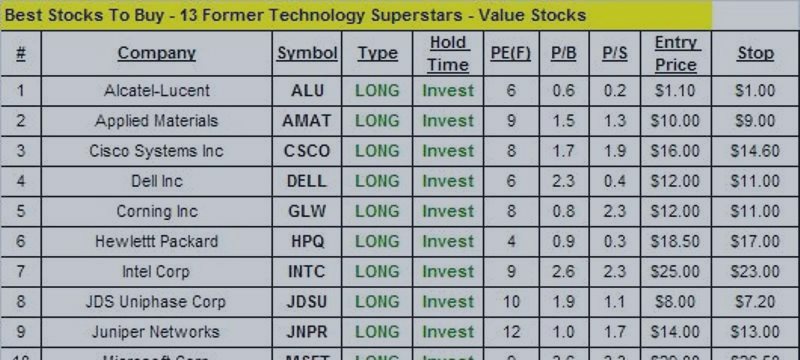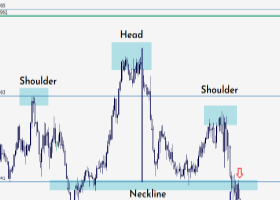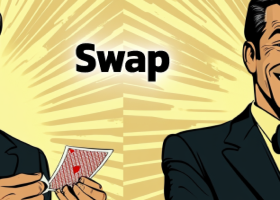The Best Stocks To Buy Are Historically Found in a Handful of Industries
Tobacco, Pharmaceutical, & Consumer Staples Made You Rich Over the Past 50 Years
One of the major benefits of being an investor in the 21st century is having a couple of centuries of stock market data to examine not only in the United States but around the world. There is some fantastic work both in the private banking sector and coming out of academia looking at what, specifically, the best stocks to buy for long-term ownership have in common.
It turns out that in this regard, the companies that make the "best of" list are not at all random.
Certain industries have specific economic, legal, and cultural benefits that make it possible for the components within them to compound money at rates far above average, producing high total shareholder return even when the initial price-to-earnings ratio is not exactly cheap. This means the highest returning stocks are clustered around a tiny portion of the overall economy, producing annual out-performance of 1% to 5%, which is a staggering wealth differential over periods of 10, 25, 50, or more years.
In this article, we're going to look at some of the findings in the hope that identifying what the best stocks to buy have been, we can better understand risk management and portfolio construction for a long-term investor.
1. In the United States, the Best Stocks To Buy Have Centered Around Tobacco, Pharmaceuticals, and Consumer Staples
In his best selling book detailing why boring stocks you might find in your grandparents' portfolio are almost always more profitable than the hot issues of the day, Wharton Business School professor Dr.
Jeremy J. Siegel, whom I've written about several times in the past, researched the total accumulation of an initial $1,000 investment, with dividends reinvested, put into each of the original S&P 500 surviving firms between 1957, when the index was established, and 2003, when he began drafting his findings. (Stocks have obviously grown in value significantly since that time so the figures would be much higher today. Nevertheless, it is still useful to look at his results.)
He then examined the top 20 firms, which represented the best stocks to buy - the top 4% of the original S&P 500 - if you had perfect hindsight to try and figure out what made them so different. You might expect with so many different kinds of companies operating at the time, you'd have ended up with businesses ranging from railroads to cruise ship operators. Nothing could be further from the truth. To put it in real world terms, between 1957 and 2003, an initial stake of $1,000 ultimately turned into:
Philip Morris - Tobacco - $4,626,402 - 19.75% CAGR
Abbott Labs - Pharmaceuticals - $1,281,335 - 16.51% CAGR
Bristol-Myers Squibb - Pharmaceuticals - $1,209,445 - 16.36% CAGR
Toostie Roll Industries - Consumer Staples - $1,090,955 - 16.11% CAGR
Pfizer - Pharmaceuticals - $1,054,823 - 16.03% CAGR
Coca-Cola - Consumer Staples - $1,051,646 - 16.02% CAGR
Merck - Pharmaceuticals - $1,003,410 - 15.90% CAGR
PepsiCo - Consumer Staples - $866,068 - 15.54% CAGR
Colgate-Palmolive - Consumer Staples - $761,163 - 15.22% CAGR
Crane - Industrial - $736,796 - 15.14%
H.J. Heinz - Consumer Staples - $635,988 - 14.78% CAGR
Wrigley - Consumer Staples - $603,877 - 14.65% CAGR
Fortune Brands - Tobacco and Consumer Staples - $580,025 - 14.55% CAGR
Kroger - Retail - $546,793 - 14.41% CAGR
Schering-Plough - Pharmaceuticals - $537,050 - 14.36% CAGR
Procter & Gamble - Consumer Staples - $513,752 - 14.26% CAGR
Hershey - Consumer Staples - $507,001 - 14.22% CAGR
Wyeth - Pharmaceuticals - $461,186 - 13.99%
Royal Dutch Petroleum - Oil - $398,837 - 13.64%
General Mills - Consumer Staples - $388,425 - 13.58% CAGR
This means that 18 of the top 20 performing original S&P 500 components, or 90%, came from three narrow parts of the overall economy: Tobacco, Consumer Staples and Pharmaceuticals. That is statistically relevant.
What makes this possible? Tobacco was an interesting case of combining extreme pricing power, massive returns on capital, an addictive product, and share prices being driven down by the war the Federal and state governments waged on the firms, along with the perceived evil of the businesses (in my own family, no matter how cheap tobacco stocks get from time to time, certain members will not allow me to add any to their portfolios). Perpetually undervalued, owners who plowed back their dividends into more stock accumulated additional shares at a rapid rate decade after decade, enriched by fact these extremely profitable firms were unpopular for social reasons. (In the United Kingdom, alcohol was the equivalent, crushing everything else. It very well may have been in the United States but we'll never know due to prohibition altering the landscape of the industry.)
Consumer staples and pharmaceuticals, on the other hand, tended to enjoy several major advantages inherent to the business model that make them ideal compounding machines:
The best stocks to buy create a product that nobody else can legally produce then delivers that product using super efficient distribution channels. This results in hard-to-replicate economies of scale. The product is protected by trademarks, patents, and copyrights, allowing the company to price higher than it otherwise could, accelerating the virtuous cycle as it generates higher free cash flow that can then be used for advertising, marketing, rebates, and promotions. Most people don't reach for the knockoff Hershey bar or Coca-Cola bottle. They want the real thing, with the price differential being small enough there is no utility trade-off on a per-transaction basis.
The best stocks to buy have strong balance sheets that allow them to weather nearly every sort of economic storm imaginable. This lowers their overall cost of capital.
The best stocks to buy generate a much higher-than-average return on capital employed, as well as return on equity.
The best stocks to buy disproportionately have a history of paying ever-growing dividends, which imposes capital discipline on management. Though it's not foolproof, it's a lot harder to overspend on expensive acquisitions or executive perks when you have to send at least half the money out the door to the owners each quarter. In fact, on a market-level analysis basis, the relationship is so clear you can divide all stocks into quintiles and accurately predict total return based on dividend yields. (This correlation is so powerful, dividend growth stocks as a class make better-than-average buy-and-hold investments.)
On top of all of these characteristics (and only when the others are present), the best stocks to buy often have near complete control of their respective market share or, at worst, operate as part of a duopoly or triumvirate.
Interestingly, several of the top 20 stocks on that list have since merged into even stronger, more profitable firms. This should reinforce their advantages going forward:
Philip Morris spun-off its Kraft Foods division, which then broke itself apart into two companies. One of those companies, Kraft Foods Group, announced a couple of days ago it is consolidating with H.J. Heinz. The new business will be called Kraft-Heinz. Wyeth was acquired by Pfizer. Schering-Plough and Merck merged, taking the latter's name.
Just as interestingly, many of these businesses were already giant, household names back in the 1950's. Coke and Pepsi between them held a super-monopoly on all market share in the carbonated beverage category. Procter & Gamble and Colgate-Palmolive controlled the aisles of grocery stores, general stores, and other retail shops. Hershey, Tootsie Roll, and Wrigley, along with the privately held Mars Candy, were titans in their respective field, long having established dominance in their respect corner of the confectionery, chocolate, candy, and gum industries. Royal Dutch was one of the biggest oil companies on the planet. (Side note: The other oil giants also did very, very well but fell just short of the top 20. Suffice it to say, you still would have built a lot of wealth had you owned them.) H.J. Heinz had been the ketchup king since the 1800's with no serious competitor in sight. Philip Morris, with its Marlboro cigarettes, and Fortune Brands (then known as American Tobacco), with its Lucky Strike cigarettes, were enormous. Everybody in the country who paid attention knew they printed money.
These were not risk-it-all-on-a-startup enterprises. These were not initial public offerings that were being bid up by overexcited speculators. These were real companies, making real money, often having been in business for what was then between 75 and 150 years. Pfizer was founded in 1849. Merck was founded in 1891 as a subsidiary of German giant Merck, which itself was founded in 1668! Heinz had been in business since 1869, selling baked beans, sweet pickles, and ketchup to the masses. Hershey began its corporate life in 1894; PepsiCo in 1893; Coca-Cola in 1886; Colgate-Palmolive in 1806. You did not have to dig deep into the over-the-counter listings to find them, these were companies that practically everyone alive in the United States knew and patronized either directly or indirectly. They were written about in The New York Times. They ran national television, radio, and magazine ads. https://www.mql5.com/en/signals/120434#!tab=history



